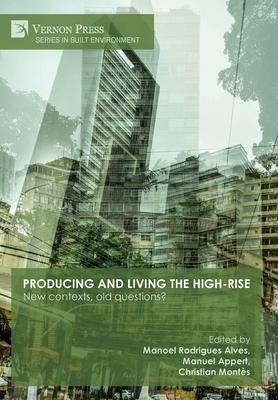The purpose of the book is to assess the process of urban verticalization in different contexts through time, to provide insight into the relationships between highrise design and the way inhabitants negotiate them in their everyday lives, to assess how planners, politicians, and designers negotiate residential highrises in the strategies they develop for building the city and to introduce urban narratives and cartographies. Verticalization, although not new, currently takes place in a very different context than post-1945. Today, highrise residential buildings are more than architectural solutions: they are commodities in a global market where capital flows are fixed by developers and municipalities.
Our exploration of residential verticalization is anchored in case studies, revealing different types of local-global negotiations in the design of the city, and has been framed by three interrelated dynamics: first, the complex relationships within the financialization of real estate markets, revealing differences in the types of local-global negotiations in the construction of the neo-liberal city; secondly, the most developed, anchors residential verticalization in the processes of socio-spatial differentiation within cities (mostly identified as gentrification associated to processes of urban renewal and densification; the third, related to readings and interpretations of the urban landscape and social, spatial practices and its iconographic and cartographic representations.
This book is of interest to academics, students, planners, architects, and urban studies professionals. It shows that the chosen research object is an increasingly relevant angle of analysis of the contemporary city. It also provides a better knowledge of the processes of residential verticalization, their impact on the privatization of the urban space, and on urban segregation or fragmentation.
